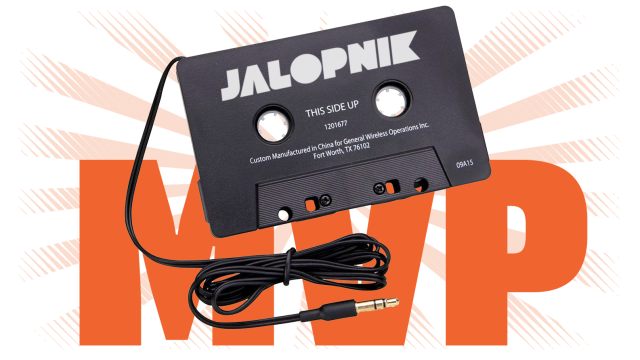I got my driver’s licence toward the end of the 2000s, but even I caught on with the car cassette adaptor. All my friends had them because we drove cars that hadn’t completely eliminated the cassette deck quite yet. Thinking back, wasn’t this one the most brilliant and enduring mainstream car hacks of all time? It all began with an electrical engineer and serial inventor named Larry Schotz, according to this very excellent Vice story.
The new cars we drive today are laden with the latest tech, everything from semi-autonomous driving functions, lane departure warning systems, automatic braking and, of course, Bluetooth connectivity. But so often, I find myself longing for a simple cord and a headphone jack that I can just plug into my phone (or iPod), go through my music library, pick something and be off. I’ve always preferred a physical cable over any kind of wireless transfer method.
But the cassette adaptor reaches further back than that, as many of you will remember. Its humble beginnings start in the ’80s, right when CD players started becoming portable but still too expensive to put in many cars.
Schotz’s 1986 patent filing is quoted in the story. He basically had an idea for an electrical, dual-lead conductor that had a headphone jack for the other sound-producing device on one end that would be connected to “an audio circuit to the record head” at the other.
From Vice:
The genius of Schotz’s invention is that it effectively subverted the cassette tape’s existing mechanisms. A tape player works by transmitting electromagnetic signals collected on an audio tape using the “head” of the tape, converting them into analogue audio sound, and amplifying them. In many ways, the cassette adaptor works by transmitting the signal directly from the head, rather than from the tape. The fact that no magnetic tape was involved likely cut down on mechanical noises, better known as tape hiss.
Schotz’s cassette adaptor was inexpensive and easy to use since you didn’t have to install anything. But there were still small problems. Your car needed to have a tape deck, for example. And you also needed some kind of power supply for the CD player, as pointed out by this issue of Popular Mechanics from 1986. Sometimes the CD player would skip. But at least you could listen to your CDs in your car, man!
For me, the cassette adaptor came at a time when we all started getting our licenses and being able to control the music on our own for the first time. It was before most people had smartphones, so we made do with our iPods, CD players and various MP3 players. I remember when my friend bought me my first one. I thought it was the most brilliant thing I’d ever seen. Sure, the sound quality wasn’t the greatest, but at least I could listen to my iPod while I drove. It was a novelty.
Today, you’d be hard-pressed to find a car that has a tape deck anymore. But there are still plenty of people driving around with older cars that have them. And so, Schotz’s invention lives on in the digital age (as long as your phone has a damn headphone jack, that is). It’s another example of a creative mind marrying existing car technology with current advancements, such as the cigarette lighter plug.
You can check out the rest of the Vice story here. It’s quite wonderful.
